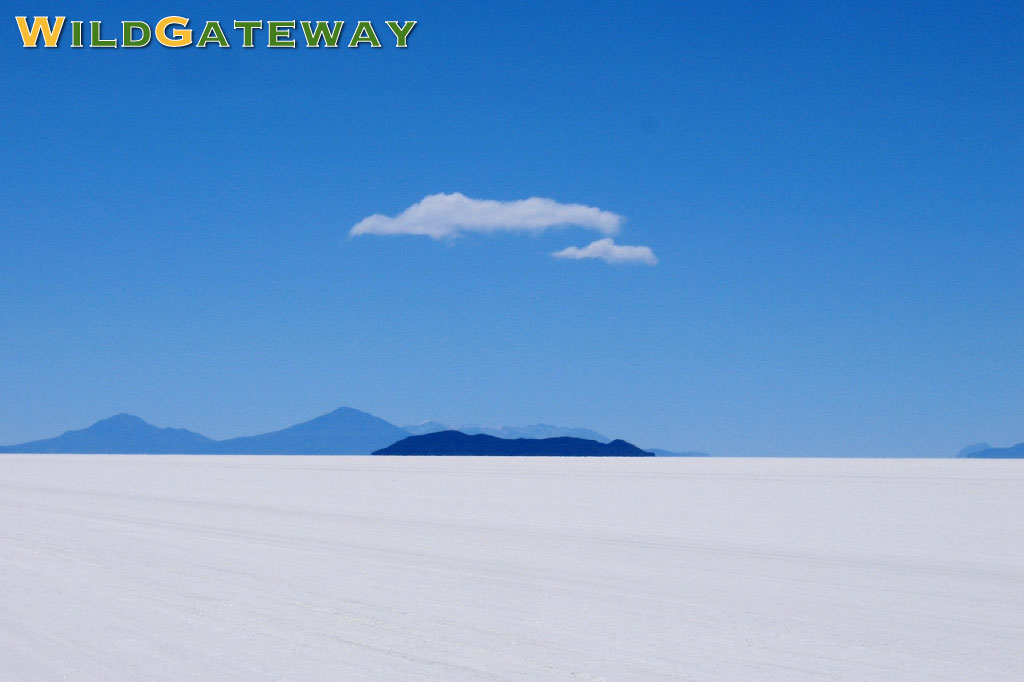The Uyuni Salt Flats in Bolivia are among the world’s most awe-inspiring natural wonders. In this article, Robert B. describes how the journey there, and the salt flats themselves, changed his whole perspective on life.
[mc4wp_form]
Getting a Different Perspective on Life at Uyuni Salt Flats, Bolivia
When I visited the vast Uyuni Salt Flats in Bolivia I expected to see one of planet Earth’s most amazing natural wonders. What I hadn’t expected to find was a completely different perspective on life.
It is hard to describe exactly how big an effect this visit had on me but we can start with the basics. Uyuni Salt Flats is the world biggest salt plain, covering an impressive 10,582 square meters (4,086 square miles). It is also the world’s highest salt flat, sitting at an altitude of 3,656 metres (11, 995 feet) above sea level.
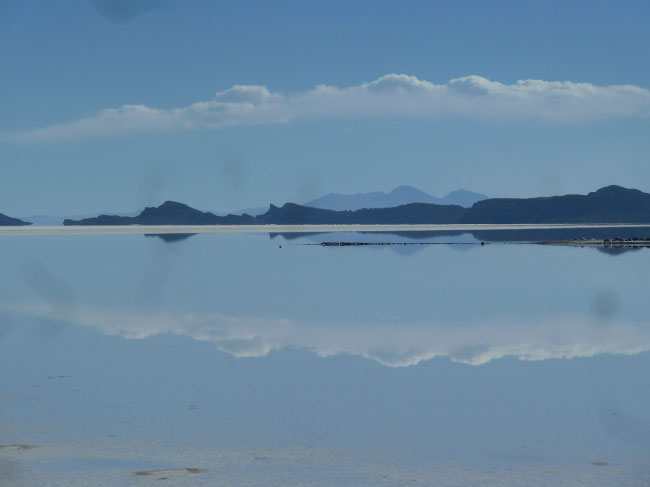
Uyuni sits in the southwest corner of Bolivia, next to the border with Chile. I travelled here from La Paz on a rough and ragged bus journey in which my shoes were re-introduced to my breakfast at one point. After over 20 hours of suffering on the bus I staggered off at the remote and desolate town of Uyuni, which is the starting point for exploring the Salt Flats.
Salt and Tourism
Two things appear to keep this tiny city going: tourism and salt. The few people I could see going through the main street all appeared to be tourists. As I later found travelling through Bolivia that all of the bags of salt in the country seem to come from Uyuni.
You need to visit the Salt Flats with a tour guide rather than on your own. This means booking a place in a 4×4 alongside a bunch of other tourists. This was the first part of the experience that gave me a new perspective on life. I shared my 4×4 with a couple of Chilean brothers, two Swiss guys, the Bolivian guide and an Australian couple. We spent three days together in the vehicle and it was fantastic to chat together and hear how people live in different parts of the world. It definitely taught me a lot and opened up my mind to exploring new places in the future.
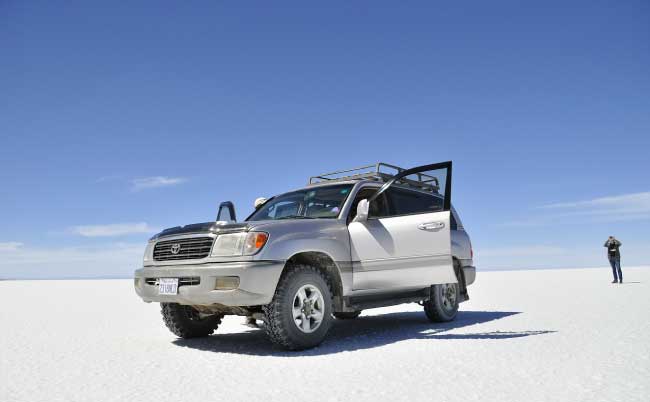
Visiting The Uyuni Salt Flats
Three days might sound like a lot of time to be driving over a salt plain, but the truth is that there are plenty of things to see during that time. There is a train cemetery with rusting old locomotives, weird rock formations and magical coloured lakes to see. You also get the chance to warm up on a cold morning by jumping into some thermal springs. However, the salt is undoubtedly the main attraction.
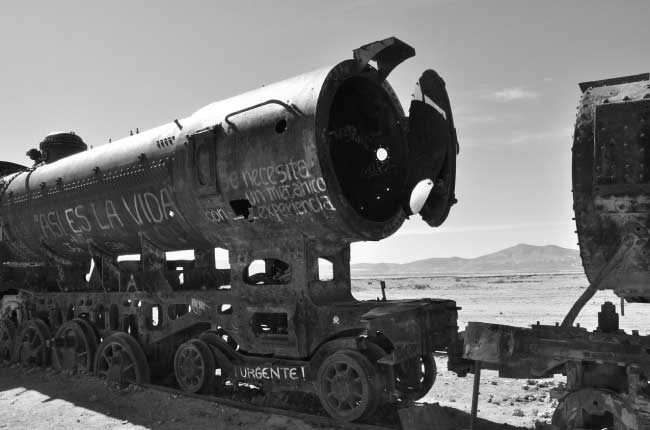
There are two different seasons in which you can see this wonder at Uyuni: the dry season and the wet one. I was lucky enough to be here during the wet season. I say lucky because at this time of year the water lying on the surface of the salt turns the whole landscape into the world’s biggest mirror. This is where my second new perspective on life came into play, and it was thrilling. The joy of driving through this bizarre upside-down world, where the sky is on the ground, is something everyone should experience once in their life. It might not sound like a big deal but it is a thrilling way to see this place and is absolutely unforgettable. Most of the time you can’t even work out where the horizon is, as the sky and ground merge together hypnotically.
Take the Best Photos of Your Life
Another great thing about the Uyuni Salt Flats is that all of your pictures will turn out better than you imagine! The quality of the light and the reflection off the salt mean that you can get terrific photos at any time of year. Even better is the fact that the seemingly endless expanse of salt means that there is no sense of perspective in your photos. This means that it is the ideal spot to try out some amazingly funny snaps. You can stand behind a friend’s outstretched arm and it will look as though they are holding a tiny version of you in their hand. You can stand behind a cooking pot and in the photo it will look as though you are getting cooked alive in it. Get creative with your camera and you will take home some of the best photos of your life.
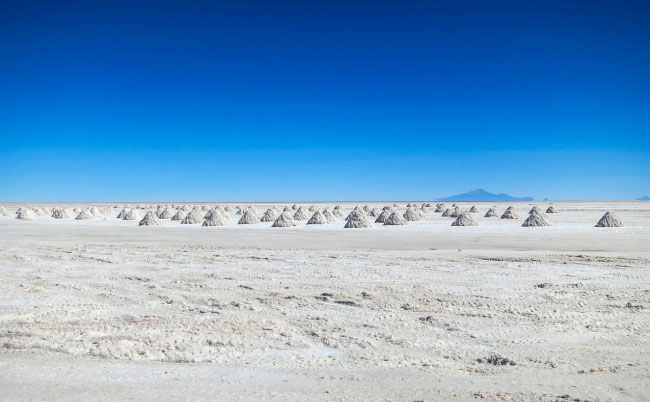
The final way in which the Uyuni salt flats helped me to get a new perspective on life came from the time spent watching the locals work. Apart from tourists, the only other people you are likely to see on the salt flats are workers digging away at the salt with picks. They wear sunglasses and ski masks to protect them from the blinding glare while they heap the salt into pyramids. Our guide told us that that many of the workers were women, although under their protective gear I wouldn’t have known. She also told us that they earn a pittance for this back-breaking work.
During the nights we stayed in villages so small that the miniature city of Uyuni looked like a sprawling metropolis in comparison. Many of the families who live in these isolated communities earn a very modest living by curing the salt in their own homes. I was told that this involves heating it in their fireplaces, thereby filling their houses with horrible and potentially dangerous fumes.
Far Away from the Rest of the World
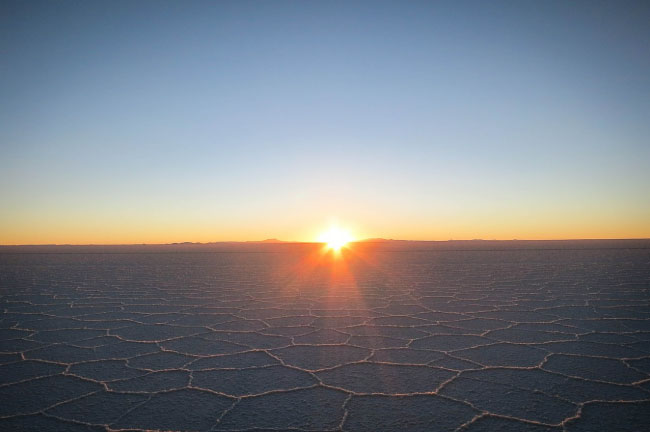
I have never felt so far away from the rest of the world as I did during the nights I spent here. For the first time in my life I simply couldn’t imagine how other people lived. There is absolutely no way I could picture myself living in such a remote, desolate place and digging or curing salt for a living.
The Uyuni Salt Flats had one last surprise for me that made sure that it would live long in my memory. Being surrounded by salt all day long is a thirsty business, so I had drunk a lot of water during the day. I woke up at 4 in the morning needing to go to the bathroom and realised that it was a small room separate from the house I was in.
It was bitterly cold outside but I stopped dead in my tracks when I saw the night sky above me. Being at such a high altitude, and so far from big cities, means that the night sky here is clear and unaffected by light pollution. It was the most amazing thing I have seen in my life. The sky was filled with more stars than I ever thought possible. I just lay down for 5 minutes to look up and enjoy the immensity of the universe in complete silence.

